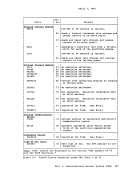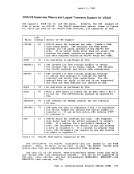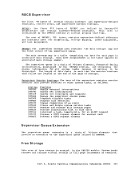list
The parameter list also contains the message ID of the message to be
received and userid of the
pending, the
order by message ID.
by other virtual machines. The REJECT subfunction terminates the
user doubleword passed back with the REJECT subfunction could indicate
(depending on how you want to use the protocol).
a
transferred from the source virtual storage to the sink virtual storage.
The sink virtual machine can then respond with the
causing data to be transferred from specified sink virtual storage to
the source virtual storage. The
external interrupt to be reflected to the source virtual machine.
The user parameter list
address and length of reply data.
executed, the user parameter list
and the userid of the virtual machine to receive the reply.
The
indicating no response.
otherwise) usinq the user doubleword.
a reply {zero length or
A reply can be executed in response to a
executing the
to receive the messaqe but may want to send a reply. A reply of zero
length could be executed simply to terminate the
application of the
used to terminate a
subfunction is executed (see "REJECT:
Code
virtual machine receives the external interrupt response.
(this is a protocol violation).
158 IBM















































































































































































































































































































































































































































